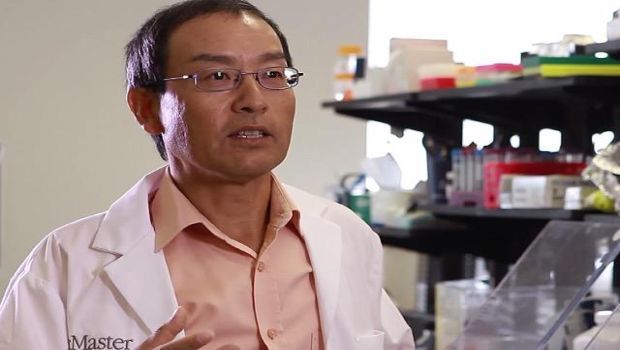Researchers Develop World's Most Sensitive Test to Detect Superbugs
Infectious diseases such as hepatitis C and some of the world's deadliest superbugs -- C. difficile and MRSA among them -- could soon be detected much earlier by a unique diagnostic test, designed to easily and quickly identify dangerous pathogens. Researchers at McMaster University have developed a new way to detect the smallest traces of metabolites, proteins or fragments of DNA. In essence, the new method can pick up any compound that might signal the presence of infectious disease, be it respiratory or gastrointestinal.


Yingfu Li is a professor in the Departments of Biochemistry and Biomedical Sciences. Photo courtesy of McMaster University
Infectious diseases such as hepatitis C and some of the world's deadliest superbugs -- C. difficile and MRSA among them -- could soon be detected much earlier by a unique diagnostic test, designed to easily and quickly identify dangerous pathogens. Researchers at McMaster University have developed a new way to detect the smallest traces of metabolites, proteins or fragments of DNA. In essence, the new method can pick up any compound that might signal the presence of infectious disease, be it respiratory or gastrointestinal.
"The method we have developed allows us to detect targets at levels that are unprecedented," says John Brennan, director of McMaster's Biointerfaces Institute, where the work was done. This new method is described online in the journal Angewandte Chemie International Edition. "The test has the best sensitivity ever reported for a detection system of this kind - it is as much as 10,000 times more sensitive than other detection systems."
Using sophisticated techniques, researchers developed a molecular device made of DNA that can be switched 'on' by a specific molecule of their choice--such as a certain type of disease indicator or DNA molecule representing a genome of a virus--an action that leads to a massive, amplified signal which can be easily spotted.
Another important advantage of the new test, say researchers, is that the method does not require complicated equipment so tests can be run at room temperature under ordinary conditions.
"This will be the foundation for us to create future diagnostic tests," explains Yingfu Li, a professor in the Departments of Biochemistry and Biomedical Sciences, Chemistry and Chemical Biology. "This invention will allow us to detect anything we might be interested in, bacterial contamination or perhaps a protein molecule that is a cancer marker. Our method can sensitively detect all of them, and it can do so in a relatively short period of time."
Researchers are currently working to move the test onto a paper surface to create a portable point-of-care test, which would completely eliminate the need for lab instruments, allowing users--family physicians, for example--to run the test.
Source: McMaster University
IDEA in Action: A Strategic Approach to Contamination Control
January 14th 2025Adopting IDEA—identify, define, explain, apply—streamlines contamination control. Infection control professionals can mitigate risks through prevention, intervention, and training, ensuring safer health care environments and reducing frequent contamination challenges.
Balancing Freedom and Safety: When Public Health Mandates Are Necessary
January 9th 2025Public health mandates, such as lockdowns, masking, and vaccination, balance liberty and safety, ensuring critical protections during pandemics like COVID-19 while fostering long-term survival through science.
Long-Term Chronicles: Infection Surveillance Guidance in Long-Term Care Facilities
January 8th 2025Antibiotic stewardship in long-term care facilities relies on McGeer and Loeb criteria to guide infection surveillance and appropriate prescribing, ensuring better outcomes for residents and reducing resistance.
Considering Avian Flu: World Health Organization Expert Warns Against Raw Milk
January 6th 2025Drinking raw milk poses risks of disease transmission, especially with H5N1 outbreaks. Expert Richard J. Webby, PhD, advises against raw cow or goat milk consumption due to its unpredictable and significant risks.